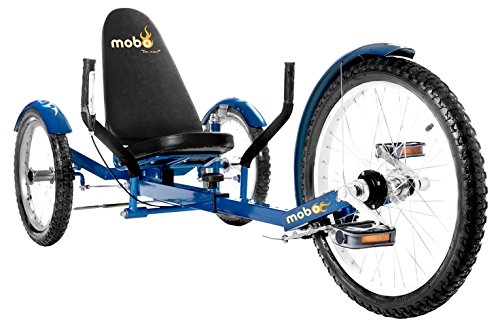How Urban Mobility Solutions Has Changed My Life The Better
페이지 정보
작성자 Sandy Gil 댓글 0건 조회 226회 작성일 24-11-26 21:39본문
 Urban Mobility Solutions
Urban Mobility Solutions Cities face numerous issues, such as congestion, air pollution and accessibility. Urban mobility solutions that make use of new technologies could improve the quality of life, increase economic growth, and reduce environmental footprint.
Cities face numerous issues, such as congestion, air pollution and accessibility. Urban mobility solutions that make use of new technologies could improve the quality of life, increase economic growth, and reduce environmental footprint.To implement these solutions, however it requires collaboration across the entire ecosystem of mobility. A citizen-centric and city-oriented approach is essential. Working with cities, cross-industry players and Mercedes-Benz experts allows for an individual solution that is tailored to the specific requirements of each city.
Congestion
The issues of congestion have long been a major focus of urban mobility planning. Time spent in traffic decreases individuals' productivity and lowers the efficiency of cities as a whole. In the end, cities must be able to balance innovation in transportation with the necessity of addressing the effects of population growth and aging infrastructure.
Urban transportation systems should provide an accessible and safe way to move people around while cutting down noise, pollution and waste. Additionally, cities must address the issues of traffic congestion, parking management and decarbonization.
There are many ways to manage traffic congestion, but to be successful everyone must take the responsibility for the problem. This starts by acknowledging that congestion is not just an inconvenience for commuters, but also an economic cost for businesses and the overall economy. This is why it is important to make use of high-quality, accurate data that shows day-today variations in travel times, to pinpoint the causes of congestion as well as the most efficient solutions.
In addition to observing traffic conditions, it is necessary to communicate to business and the public how congestion impacts their operations. Clear and consistent communication will help increase awareness of the problem, educate the public on solutions, and inspire business leaders to advocate congestion reduction strategies.
One solution is to increase the capacity of road infrastructure. This could be expensive and subject to a variety of restrictions, such as environmental and land-use laws. Other options include promoting alternative modes of transportation, such as bikeshare programs and taxi hailing apps or even the introduction of congestion pricing and carpooling. In addition parking systems can be inefficient, causing pollution and congestion. Smart parking solutions can maximize space usage and divert trips from crowded roads.
Aging Infrastructure
Cities and towns across the country are struggling to manage traffic congestion and safety concerns due to the age of the infrastructure. Bridges and roads are at risk as the volume of traffic continues to rise which puts residents and business owners at risk. Also, travel times increase.
The aging transportation infrastructure is a problem that can't be solved solely by technology. The Oregon Department of Transportation is trying to tackle the issue by investing in new highways and other transportation projects that will ease traffic congestion, improve safety and modernize the system. These investments will ensure that the Portland region continues to grow for generations to come.
As urbanization continues to accelerate, many nations are confronting a shortage of affordable homes and the need for sustainable solutions in mobility is growing. Innovative solutions like e-scooters, bicycle sharing, and e-buses are being implemented to curb climate change and cut carbon emissions. These new mobility solutions also help to increase accessibility for people with disabilities which is a major issue for a lot of citizens.
To comprehend the impact of an aging infrastructure on future urban mobility solutions, this study employs systematic literature review (SLR) to study 62 scientific papers and forecast the evolution of various scenarios up to 2030. The gradual advancement of automated and shared electric mobility scooter with seat for adults is expected to be most important in driving alterations. The scenario "Mine is Yours" dominates (35%) followed by "Grumpy Old Transport" (18%) and "Tech-eager Mobility" (17 17 percent). Progressive legislation and supportive policies are essential for making these revolutionary mobility solutions widespread and societally accepted.
Inequality
Urban mobility solutions must not just improve the flow of traffic, but also reduce emissions and be socially and economically affordable for all. Transportation costs are typically one of the biggest household expenses, and these expenses can be particularly costly for low-income residents. High car payments, fuel, insurance and maintenance expenses can be a major financial burden on families and prevent them from accessing jobs, education, and services. Furthermore the commutes that are too long can negatively impact the health of residents.
Public transportation is an attractive alternative to private cars however, many cities aren't equipped with the infrastructure required. The aging public transportation system was designed to serve smaller populations, and requires an enormous investment to modernize. A lack of funds, as well as legacy technology, can also hinder the development of new services.
In addition, congestion increases the number of pollutants in the air and can pose a threat to public health. The resultant poor air quality can worsen respiratory problems and decrease overall quality of living. By enhancing and expanding the existing infrastructure congestion can be prevented by implementing a smart urban mobility plan.
Increasing the capacity of public transport will reduce travel times and make it more accessible for everyone people, including those with disabilities and infirmities. Additionally, it will reduce the burden on households with costly cars and free up parking space that can be used for more productive purposes.
Increased use of alternative transportation modes can have a direct effect on inequality. As the density of cities increases, Black-White and AAPI-White commuting inequality decreases, while women's commute time decreases in comparison to men's. This suggests that rising density levels make AAPI workers to accept comparable wages with White workers for longer commute times, which causes Black workers to work in less remote places, and restricts women's opportunities to work in jobs that match their qualifications and skills.
Air Quality
Research has shown that there is a direct connection between exposure to harmful pollutants and health. Traffic congestion that is high and the use of diesel and gasoline vehicles generate high levels of particulate matter (PM2.5, PM10) and gases, including nitrogen oxides (NO) as well as sulfur dioxide (SO2), volatile organic compounds, and carbon monoxide, which pose an illness risk and contribute to climate change.
Exposure to these pollutants could lead to heart attacks, lung irritation, asthma and delayed development in children and impaired cognitive functions. They can also contribute to ozone and greenhouse gas production as well as the urban heat island effect which causes temperatures to rise in cities.
Promoting active mobility and the growth of public transportation can improve air quality. Reduced emissions from urban transport can also aid in achieving local, international and national climate change goals.
Smart mobility solutions can be used to encourage commuters to choose 4 wheeled compact electric mobility scooter mobility scooter 1000w veleco faster (please click for source) vehicles and vehicles that emit less emissions. They can also provide information on safe walking and biking routes. They can also promote ridesharing, which reduces the number of cars and pollution on the roads.
In a recent study we have simulated SUMPs' (Sustainable Urban Mobility Plans) impact on 642 cities in Europe. Our findings indicate that SUMPs can have a significant impact on the models "urban backgrounds concentrations" of NO2 and PM2.5 with an average reduction of these pollutants of about 7%. However it is important to note that these findings only consider the emissions from transport and the urban background concentrations. Other advantages of SUMPs such as reduced energy consumption, street-level concentrations, and electro-mobility are not considered in this work and should be considered in future studies.
Logistics
Urban mobility solutions should be built around an ecosystem model that involves multiple stakeholders. They must take into account technology, equity and sustainability and be tailored to each city's unique context. While new technologies can help, urban cheap electric mobility scooters for sale systems should be able to integrate existing infrastructure, promote bike share and public transport programs, and improve safety.
Logistics is the process of moving goods and people within a city. It is the core of urban mobility. It is essential to reduce the amount of traffic, optimizing commute times and enhancing travel accessibility. The development of new technology, such as autonomous vehicles (AVs) will have an immediate impact on the city's logistics. It will also make the transportation sector more effective. This is due to the need for human drivers, decrease fatal accidents caused by driver errors and increase traffic flow.
Despite these advantages, logistics is complicated by the fact that it involves many different stakeholders, with each having their own objectives budgets, goals and old technology. It is difficult to ensure that there is a consistent approach to the execution of a particular project. Additionally, it can be difficult to transfer and scale solutions from one city to the next, as each has its own needs.
To tackle these issues cities must encourage technological innovation and create efficient, agile logistical processes that can adapt to keep pace with technological advancements. This can be accomplished by promoting green freight management, integrating eco-friendly urban logistics planning into SULPs and SUMPs and examining the possibility of drones flying to transport people around the world. It is also essential to promote collaboration between public transportation agencies, private companies, and logistics service providers. This will allow for better transportation and improve the efficiency of the city and ultimately improve citizens' living standards.
댓글목록
등록된 댓글이 없습니다.

